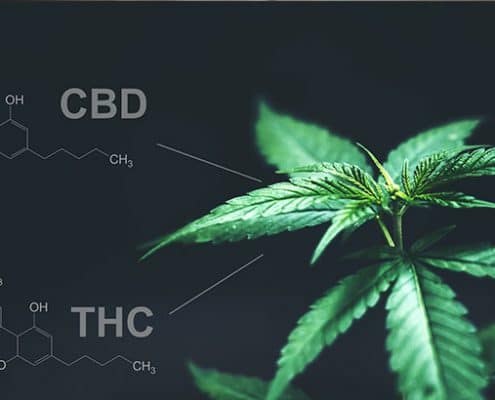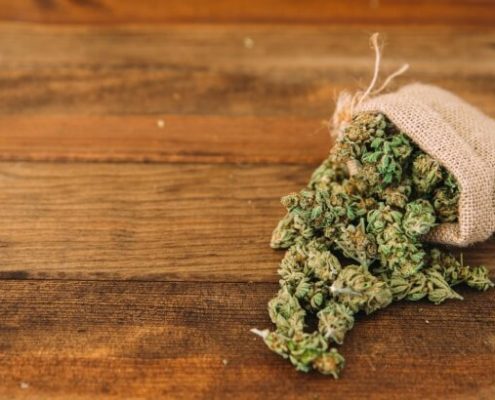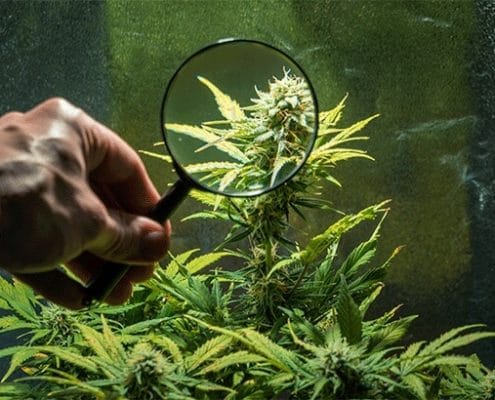The Main Differences Between CBD Oil and Kratom 23 Sep, 2021
The Main Differences Between CBD Oil and Kratom
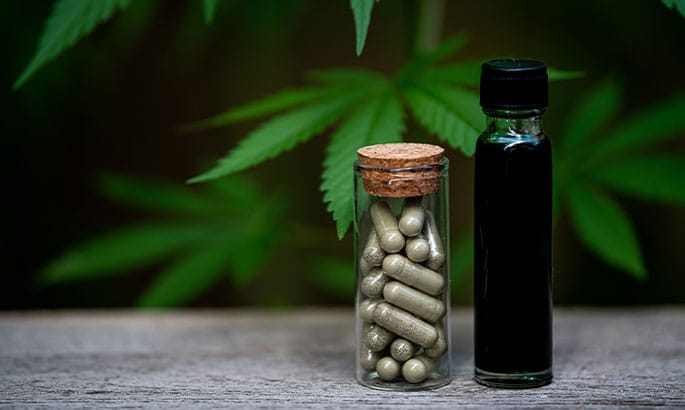
If you’ve researched natural remedies lately, you’ve probably noticed that there’s a lot of discussion about two remedies in particular: CBD oil and kratom. CBD oil and kratom have both become hot topics in the natural wellness community. But why are people so interested in CBD oil and kratom? What do they do and how are they different? Find out below as we go over the main differences between CBD oil and kratom.
CBD Oil and Kratom Come From Different Plants
While CBD oil and kratom are both considered natural, holistic products, they’re completely different substances that come from entirely different plants.
CBD and the Cannabis Plant
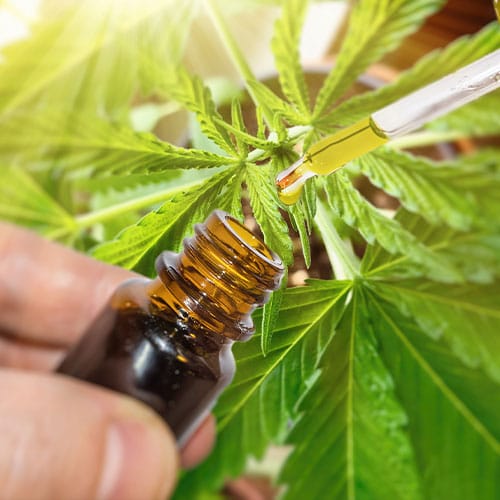
Studies also suggest that CBD has anti-inflammatory, antioxidant, and neuroprotective qualities. Researchers believe the properties of CBD could have a wide range of health benefits, so CBD has become an intensely studied cannabinoid.
Kratom and Mitragyna Speciosa
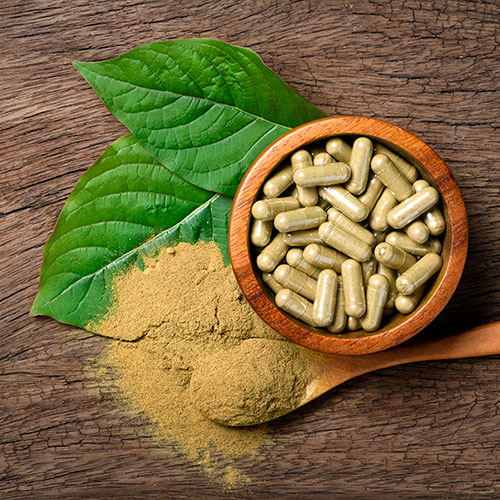
Research suggests that there are over 40 active compounds in kratom, but two alkaloids are of particular note: mitragynine (MG) and 7-hydroxymitragynine (7-HMG). MG appears to have more therapeutic qualities, while 7-HMG has psychoactive effects and opioid-like properties. When people use kratom, they consume kratom leaves and products made from kratom leaves, so they consume both of the notable alkaloids from the plant.
CBD Oil and Kratom Have Different Effects and Uses
CBD oil and kratom have different effects, but they have some overlap in potential uses. Below, we’ll go over these similarities and differences. We’ll also talk about some very important differences in the scientific evidence for each product’s potential health benefits.
CBD Effects and Uses
Early CBD studies found that it may have anti-inflammatory, antioxidant, and neuroprotective properties. As a result, CBD is currently being studied as a potential treatment for many health issues, including:
- Chronic Pain
- Anxiety and Depression
- Epilepsy
- PTSD
- Opioid Addiction
- Amyotrophic Lateral Sclerosis (ALS)
- Multiple Sclerosis (MS)
- Inflammatory Skin Conditions
- Arthritis
- Sleep Disorders
Many people who use CBD use it to address a medical issue like the ones listed above. People may also use CBD more generally to promote overall health and well being. According to Harvard Health, the most common reasons people use CBD are to address anxiety, chronic pain, and sleep issues.
While CBD in general isn’t FDA approved to treat specific medical conditions, there is actually an FDA-approved prescription drug that contains CBD as its active ingredient: Epidiolex, which is FDA approved to treat seizures associated with Lennox-Gastaut syndrome or Dravet syndrome.
Kratom Effects and Uses
The current research on and anecdotal evidence about the effects of kratom are extremely mixed. While many people who have tried kratom say that it has helped them with issues like chronic pain or opiate withdrawal, some experts say that kratom doesn’t have proven medical uses or that the risks of using kratom outweigh its benefits.
Kratom can have stimulant effects or opioid-like effects. Anecdotally, kratom users report that low doses of kratom generally have a stimulant effect, while higher doses have an opioid-like effect. However, a 2019 study found no correlation between dosage and the type of effect kratom users experienced.
According to a 2020 survey, the main reason Americans use kratom are:
- Pain Relief
- Depression Relief
- Anxiety Relief
- To Reduce or Stop Opioid Use
Pain relief was the most common reason people in the survey used kratom. Pain relief is also a main reason people use CBD, so this is one thing the two natural products have in common.
In 2017, some of the research on the health benefits of kratom appeared promising. One review found that kratom was effective at reducing pain, improving immune system function, and inducing relaxation. However, even in 2017 some researchers noted that the potential side effects of kratom may outweigh its benefits. And more recent research seems to support this theory. A 2020 review found that the recent rise in kratom use is “cause for steadily growing concern” due to the increasingly apparent risk of serious side effects and addiction associated with the plant.
CBD Oil and Kratom Have Different Side Effects
CBD and kratom are very different when it comes to potential side effects.
Side Effects of CBD
Research suggests that CBD is generally well tolerated with few side effects. High doses of CBD have been found to cause mild side effects such as drowsiness, nausea, reduced appetite, and dry mouth, but CBD has no known serious side effects. The World Health Organization recently released a report in which they concluded that CBD is both safe and non-addictive. Discontinuing CBD use does not cause withdrawal symptoms.
Side Effects of Kratom
Studies suggest that kratom may be addictive. One of the compounds in kratom, 7-HMG, appears to activate opioid receptors in the brain, which means it has addictive potential. A 2014 survey of 293 kratom users found evidence to support the theory that kratom may be addictive. Almost every participant in this survey showed signs of addiction after 6 months of kratom use. The survey noted that kratom appears to have both mental and physical withdrawal symptoms. The most common physical withdrawal symptoms reported in the study included muscle spasms and pain, watery eyes or nose, hot flashes, fever, sleeping difficulty, and diarrhea. The most common psychological withdrawal symptoms were restlessness, anger, sadness, tension, and nervousness.
In addition to having addictive potential, kratom appears to have more side effects compared to CBD, including some potentially serious side effects. The most common side effects of kratom include stomach pain, muscle pain, itching, dry mouth, constipation, lack of appetite, chills, nausea, and vomiting. Poison control centers have reported kratom users having serious side effects, including dizziness, hallucinations, depression and delusion, breathing suppression, seizure, coma, and death. While studies suggest it would take a very high dose or a medication interaction to do so, it is possible to overdose on kratom.
In general, studies suggest that the more negative side effects of kratom occur when people have taken high doses or used kratom over a long period of time. Studies also show that kratom may have serious side effects due to significant interactions with prescription drugs, including the antipsychotic quetiapine.
CBD and Kratom Come in Different Forms
Types of CBD and CBD Products
CBD is extracted from cannabis hemp plants. Different extraction processes lead to different types of cannabinoid extractions, including:
- Full-Spectrum CBD: Full-spectrum CBD contains the full spectrum of cannabinoids and terpenes within the hemp plant. This includes CBD and small amounts of cannabinoids like CBN, CBG, and THC. Note that, by law, hemp-derived CBD products can never contain more than 0.3% THC.
- Broad-Spectrum CBD: Broad-spectrum CBD is just like full-spectrum CBD, except it doesn’t contain any THC.
- CBD Isolate: CBD isolate doesn’t contain any other cannabinoids. It’s pure CBD.
Wondering why someone would prefer one type of CBD extract over the other? Many people feel that CBD is more effective when it’s taken with other cannabinoids. The theory here is that cannabinoids have a symbiotic relationship with each other. If you want to test this theory yourself, you want a full-spectrum or broad-spectrum CBD product. Full-spectrum products are best for people who don’t care about consuming trace amounts of THC. Broad-spectrum products are best for those who want multiple cannabinoids, but no THC. Then, if you want your product to contain CBD and no other cannabinoids, a CBD isolate product would be the right choice for you.
CBD extract can be used to make many products, including CBD oil. Other popular CBD products include:
- CBD Capsules
- CBD Tinctures
- CBD Edibles (CBD Gummies, Chocolates, Drinks etc.)
- CBD Vapes
- CBD Topicals (CBD Lotions, Creams, Balms, etc.)
Types of Kratom Products
Some people who use kratom consume the leaves themself, while others consume products made from kratom leaves.
Kratom leaves can be eaten fresh or dried. Kratom leaves can also be used to make kratom tea or can be ground into a powder that can be ingested. And, while it’s uncommon, kratom can be smoked or vaporized.
Kratom powder or extract can be used to make products such as:
- Tinctures
- Capsules
- Tablets
- Gum
- Flavored Powders
CBD Oil and Kratom Have Different Legal Statuses
CBD products and kratom are both federally legal in the United States, but they have different legal statuses at local levels.
CBD Legality in the United States
The 2018 Farm Bill made hemp federally legal in the United States. While CBD can be found in both hemp and marijuana plants, most CBD products are derived from hemp. So, most CBD products are hemp CBD products, which are federally legal in the U.S.
Though hemp CBD is legal at the federal level, it’s not fully legal in every state. Each state has the right to enact its own laws regarding hemp cultivation and possession. Most states have simply adopted their own version of federal hemp regulations. However, a few states have adopted stricter regulations. For example, Idaho only allows hemp-derived CBD products that have 0% THC within their jurisdiction (federal law allows for up to 0.3% THC content in hemp products).
Kratom Legality in the United States
Kratom is federally legal in the United States, but the DEA recently contemplated making it a controlled substance. In August of 2016, the DEA announced that it would reclassify kratom as a Schedule I drug, but ended up withdrawing their notice of intent to do so due to public response. In 2017, the FDA also released a public health advisory about kratom, in which they described it as a “deadly risk” to public health. Still, as of 2021, kratom is federally legal in the U.S.
At the local level, the legality of kratom in the United States can vary from state to state and even city to city. Several states, including Tennessee and Vermont, have banned kratom. Certain cities within the U.S. have also banned kratom, despite it being legal in their state. For example, kratom is legal in most of California, but not in San Diego, California. Because the local legality of kratom can get complicated, people who want to try kratom should carefully check their local laws before doing so.
Final Thoughts on CBD vs. Kratom
Overall, CBD and kratom are very different natural products. While they are both used for pain relief, they have substantial differences in their overall effects and health risks. The most notable difference between these two substances is in their side effects and their addiction potential. CBD is generally well tolerated and is considered safe by the World Health Organization. CBD is also not addictive. Kratom, on the other hand, appears to have addiction potential and a significantly greater risk of serious side effects.
With that said, more research is needed to fully understand the side effects and health benefits of CBD and kratom. This is particularly true for kratom, which has been studied far less compared to CBD. Only time will tell whether or not the potential benefits of kratom outweigh its potential risks.


